
Fort Devens is a United States Army Reserve military installation in the towns of Ayer and Shirley, in Middlesex County and Harvard in Worcester County in the U.S. state of Massachusetts. Due to extensive environmental contamination it was listed as a superfund site in 1989. Most of the fort's land was sold off in 1996, but the cantonment area of the post was retained by the Army as the Devens Reserve Forces Training Area (RFTA). Fort Devens was reactivated in May 2007, though no units of active Army have been located there. The Devens Range Complex operates on property in Lancaster, south of Route 2, for live-fire training with small arms, machine guns, grenades, and rockets.
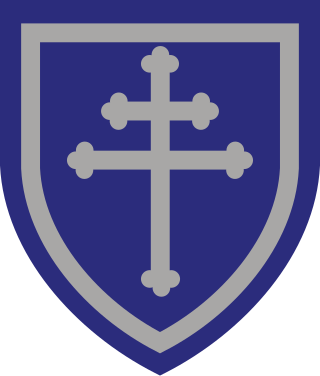
The 79th Infantry Division was an infantry formation of the United States Army Reserve in World Wars I and II.

The 77th Sustainment Brigade is a unit of the United States Army that inherited the lineage of the 77th Infantry Division, which served in World War I and World War II. Its headquarters has been at Fort Dix, New Jersey, since its predecessor command, the 77th Regional Readiness Command, was disestablished in 2008 from Fort Totten in Bayside, Queens, New York. Soldiers from the 77th have served in most major conflicts and contingency operations involving the US since World War II.

The 94th Division was a unit of the United States Army in World War I, and of the Organized Reserve Corps in 1921 until 1942.

The 97th Infantry Division was a unit of the United States Army in World War I and World War II. Nicknamed the "Trident division" because of its shoulder patch, a vertical trident in white on a blue background, it was originally trained in amphibious assaults as preparation for deployment in the Pacific Theater. It was deployed to Europe in 1944 when casualties from the Battle of the Bulge needed to be replaced.

The 98th Infantry Division ("Iroquois") was a unit of the United States Army in the closing months of World War I and during World War II. The unit is now one of the U.S. Army Reserve's training divisions, officially known as the 98th Training Division. Its primary mission is to conduct Initial Entry Training (IET) for new soldiers. It is one of three training divisions subordinate to the 108th Training Command (IET) and handles command and control of units throughout the eastern United States and in Puerto Rico.
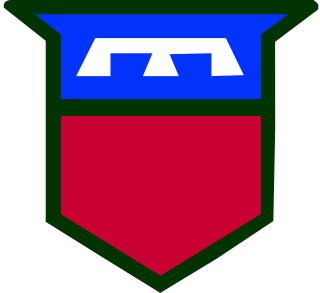
The 76th Infantry Division was a unit of the United States Army in World War I, World War II and the Cold War. The division was inactivated in 1996 and has been reconstituted as the 76th US Army Reserve Operational Response Command in 2013.

The 43rd Infantry Division was a formation of the United States Army from 1920 to 1963, serving in the Pacific during World War II. It was activated in 1920 as a National Guard Division in Connecticut, Maine, Rhode Island, and Vermont. The 143rd Regional Support Group of the Connecticut National Guard now carries on the heritage.
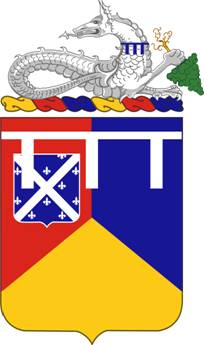
The 66th Armor Regiment is the oldest armored unit in the United States Army, tracing its lineage to the 301st Tank Battalion which served with distinction soon after it was formed in the First World War; the 301st trained at Camp Meade, Maryland, where then-Cpt. Dwight D. Eisenhower was an instructor. It has often been rumored that the 301st, the parent unit of the 66th, was first commanded by Col. George S. Patton, but this appears not to have been the case; while Patton was the first officer assigned to the Tank Corps, and while the 301st Tank Battalion was the first unit formed, Patton went nearly immediately to France to train Americans attached to Allied commands. The 301st was the only American heavy tank battalion to have seen action in the war. After the war, the 301st transitioned in the Regular Army to become the 66th Infantry Regiment by way of the 16th Tank Battalion.

The 317th Infantry Regiment was a regiment of the United States Army during World War II. It was one of three infantry regiments in the 80th Infantry Division. Today, it is known as the 317th Regiment and is based in Lynchburg, Virginia as a training unit within the United States Army Reserve - currently under the 104th Training Division.
The 314th Infantry Regiment is an infantry regiment of the U.S. Army first organized in 1917.

The 13th Infantry Regiment is a United States Army infantry regiment whose battalions are currently tasked as basic training battalions.
The 67th Armored Regiment is an armored regiment in the United States Army. The regiment was first formed in 1929 in the Regular Army as the 2nd Tank Regiment (Heavy) and redesignated as the 67th Infantry Regiment (Medium Tanks) in 1932. It first became the 67th Armor in 1940. The regiment participated in World War I, World War II, Desert Storm/Desert Shield, Operation Iraqi Freedom, Operation Enduring Freedom, Operation Spartan Shield, Operation Inherent Resolve, Operation Resolute Support, and Operation Freedom's Sentinel.
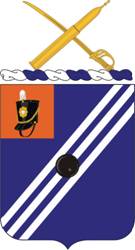
The 76th Field Artillery Regiment is a field artillery regiment of the United States Army. First formed as a cavalry regiment in 1916, the regiment was converted to field artillery in 1917, and served in Europe during World War I with the 3rd Division and as a separate battalion during World War II, as well as in peacetime at Fort Knox, KY, and Fort Devens, MA. Since 1959, the regiment has been a parent regiment under the Combat Arms Regimental System and the U.S. Army Regimental System, with regimental elements serving with the 3rd Infantry Division in Germany and Operation Iraqi Freedom, with the 7th Infantry Division in Korea, and in the Army Reserve. No regimental elements are currently active.
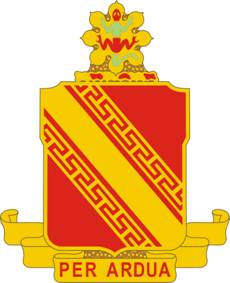
The 44th Air Defense Artillery Regiment is an Air Defense Artillery regiment of the United States Army, first constituted in 1918 in the Regular Army during World War I. During World War II the unit served as the 54th Coast Artillery Regiment
The 340th Infantry Regiment was a National Army unit first organized for service in World War I as part of the 85th Infantry Division in Europe. Since then it has served as a training regiment, training Army Reserve and Army National Guard soldiers fighting in the War in Afghanistan (2001-2021) and the War in Iraq.

The 315th Cavalry Regiment was a cavalry unit of the United States Army during World War I and the interwar period. It was activated in early 1918 but broken up later that year to form new artillery units. The unit was recreated as a Rhode Island, Connecticut, Vermont, and Massachusetts Organized Reserve unit during the interwar period. It was disbanded after the United States entered World War II.
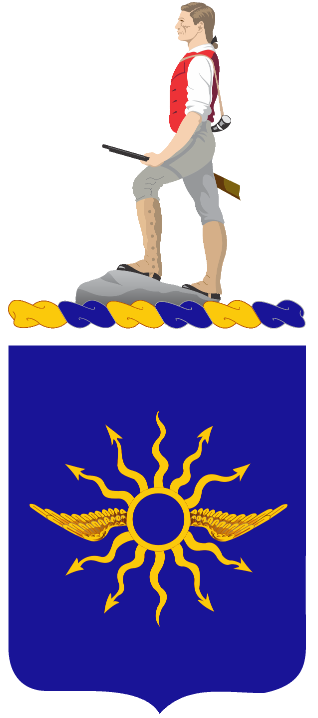
The 316th Cavalry Regiment was a cavalry unit of the United States Army during the interwar period. The unit was activated as a Rhode Island, Connecticut, Vermont, and New Hampshire Organized Reserve unit during the interwar period. It was converted into a signal aircraft warning regiment after the United States entered World War II.
The First Corps Area was a Corps area of the United States Army. It replaced the Northeastern Department, and was headquartered at South Boston Army Base, Massachusetts. The organization included Army units and facilities in Maine, Massachusetts, New Hampshire, Rhode Island, Vermont, and Connecticut. It was responsible for the mobilization, and administration of the First United States Army (1936–38); the Fourth Army, I Army Corps with 9th, 26th, and 43d Divisions; XI Corps, constituted 29 July 1921, with the 76th, 94th, and 97th Division; coast defense units of the First Coast Artillery District, some units of the GHQ Reserve, and the Zone of the Interior support units of the First Corps Area Service Command. First Corps Area was redesignated First CASC in May 1941.

The 358th Infantry Regiment is a unit of the United States Army. Organized in 1917, it took part in both World War I and World War II as a subordinate unit of the 90th Infantry Division.


















